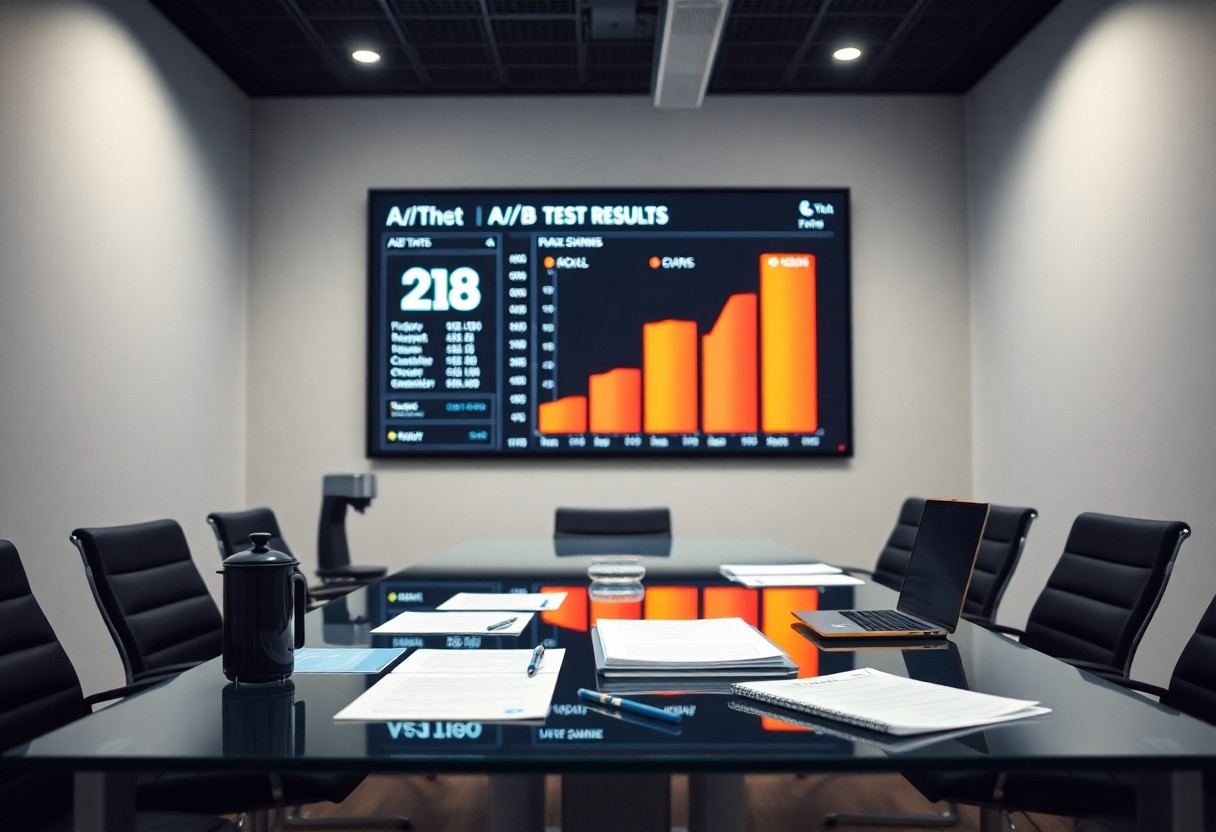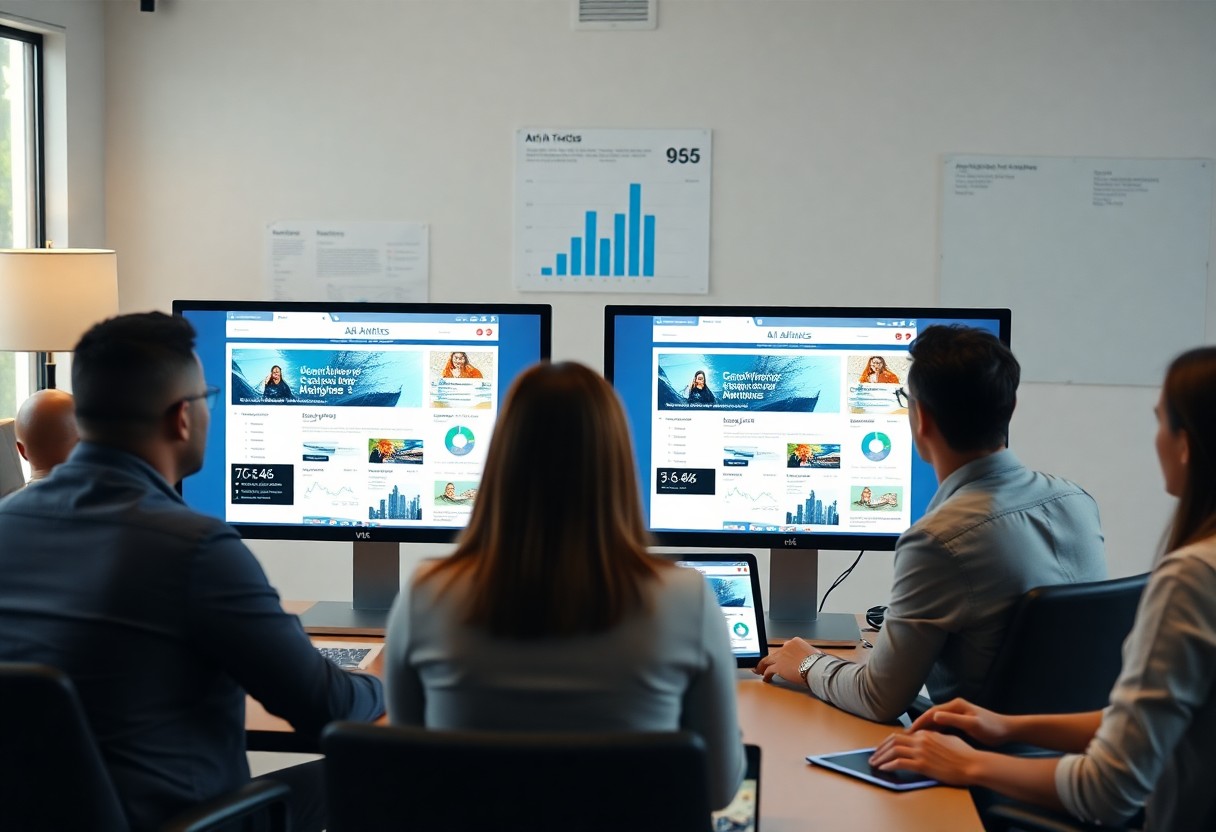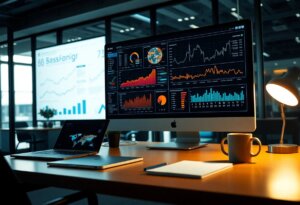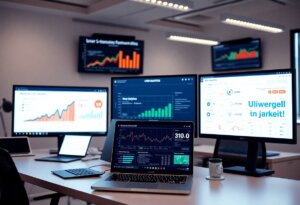Automation of A/B testing using AI technologies can significantly enhance your decision-making process. By leveraging advanced algorithms, you can streamline testing procedures and gain actionable insights without the manual effort typically associated with traditional methods. In this case study, you will explore how AI-driven strategies improve efficiency, accuracy, and effectiveness in A/B testing, empowering you to optimize your marketing campaigns and drive better results for your business.
The AI Revolution in A/B Testing
AI is reshaping A/B testing by providing data-driven insights that streamline the decision-making process. By automating test designs and analyzing results, you can reach conclusions faster, ultimately optimizing your campaigns in real time. With advanced algorithms, AI identifies patterns within complex datasets, helping you discern winner variations with greater accuracy. This shift not only enhances efficiency but also empowers you to focus on larger strategic decisions rather than getting bogged down in manual testing procedures.
Transforming Traditional Methods
Traditional A/B testing often requires significant time and resources, limiting the number of variations you can test. AI elevates this process by enabling rapid analysis of multiple variables simultaneously, allowing you to discover insights that previously went unnoticed. You can quickly adapt and iterate on designs based on real-time feedback, shifting your focus from lengthy testing cycles to immediate actionable results.
Key Technologies That Enable AI-Driven Testing
Several technologies drive the effectiveness of AI in A/B testing. Machine learning algorithms, natural language processing, and predictive analytics are among the primary tools that enhance your testing capabilities. These technologies analyze user behavior and segment audiences more accurately, enabling you to tailor your tests better and improve the precision of your results.
Machine learning algorithms can automatically analyze user interactions, identifying which elements lead to higher engagement. Natural language processing allows for sentiment analysis in user feedback, giving you qualitative insights. Predictive analytics evaluates potential outcomes based on historical data, guiding you in selecting the most promising variations to test next. By leveraging these technologies, you maximize the potential of your A/B testing efforts, driving superior results and enhancing user experience. Investing in these AI-driven technologies not only saves time but also offers a competitive edge in data-driven decision-making.
Metrics That Matter: How AI Redefines Success
Shifting the focus from traditional metrics to more insightful data analytics transforms your understanding of success. AI enables you to evaluate multiple performance indicators concurrently, offering a more holistic view of your campaigns. Metrics like customer lifetime value, engagement depth, and conversion rates carry more weight than simple click-through rates, leading to more effective decision-making processes and targeted optimizations. As you refine your strategy, leveraging AI-driven insights empowers your efforts to achieve sustained growth.
Insights Beyond Simple Click-Through Rates
Click-through rates provide a narrow view, often failing to capture deeper user behavior and intentions. Metrics like session duration, interaction heat maps, or customer feedback deliver richer insights, informing your future A/B tests. By analyzing these comprehensive data points, you’re better equipped to gauge user satisfaction and design more engaging experiences that go beyond just clicks. This multidimensional analysis transforms your approach, making it more user-focused and effective.
The Role of Machine Learning in Data Interpretation
Machine learning algorithms enhance data interpretation by identifying trends and behaviors that traditional analysis might miss. These algorithms process vast datasets quickly, uncovering actionable insights that drive campaign adjustments in real-time. By automatically analyzing user interactions and adapting to new data, your A/B testing becomes not just a reactive measure, but a proactive strategy for continuous improvement.
Machine learning models analyze patterns in user interactions, revealing correlations that can directly influence your strategies. For instance, an algorithm might identify a particular demographic that responds better to specific content types, enabling you to tailor your campaigns accordingly. With predictive analytics, you can anticipate user needs and behaviors, enhancing future iterations of your A/B tests. This level of granularity allows for a more refined understanding of your audience, allowing you to optimize your efforts in line with genuine user preferences, thereby increasing the overall effectiveness of your marketing initiatives.

Real-World Application: Steps Taken in Our Case Study
This case study highlights a structured approach to leveraging AI for automated A/B testing, revealing insights that drive optimization. By meticulously following processes from hypothesis formation to analysis, you can understand how AI streamlines your testing efforts and enhances decision-making efficiency.
Setting the Stage: Objectives and Initial Hypotheses
Your primary objective was to improve conversion rates on a targeted landing page by 25% through systematic testing. Initial hypotheses focused on varying call-to-action button colors and text, as well as different headline formats. These specific variables were chosen based on previous user behavior insights and industry benchmarks.
Implementation: Tools, Techniques, and Challenges Encountered
Tools such as Google Optimize and AI analytics platforms facilitated the implementation of the A/B tests. You encountered challenges with data integration across multiple platforms and ensuring accurate tracking of user interactions. Additionally, the complexity of interpreting results from AI-driven analytics proved demanding but ultimately rewarding.
Using Google Optimize allowed for seamless A/B testing setup, enabling real-time adjustments based on results. AI tools like Optimizely integrated data collection and analysis, helping to identify patterns in user behavior. Challenges included aligning data formats from different sources and enhancing communication between development and marketing teams. Despite these obstacles, the collaborative process fostered innovation and refined testing strategies, leading to more precise and actionable outcomes in conversion rates.
Analyzing Results: Lessons Learned and Key Takeaways
Using AI for A/B testing revealed several pivotal insights that shaped your approach to digital marketing. Automated systems not only streamlined the testing process but also increased the accuracy of outcomes. The ability to analyze vast datasets in real time allowed you to draw conclusions that were previously obscured by manual methods. This proactive stance has positioned your strategy to be more responsive to market trends, enhancing overall effectiveness.
Comparing Human vs. AI-Driven Outcomes
| Human-Driven Testing | AI-Driven Testing |
| Limited data analysis capacity | Handles extensive datasets rapidly |
| Time-consuming manual processes | Automated, real-time adjustments |
| Subjective bias in interpretation | Objective, data-driven insights |
| Slower feedback loops | Instantaneously identifies trends |
Unexpected Findings that Shifted Our Perspective
AI-driven A/B testing unveiled surprising trends, such as customer segment behavior that previously went unnoticed. Specific demographics reacted positively to variations that you didn’t anticipate, leading to an overall increase in conversion rates. This data highlighted the importance of diversifying testing approaches and not relying solely on conventional metrics.
For example, an unexpected spike in engagement from a niche audience segment demonstrated how AI could identify patterns that traditional methods overlooked. One test revealed that a minor design tweak enhanced the experience for users aged 18-24 significantly more than the general population, doubling your conversion rate within that group. Incorporating these insights has encouraged you to consider broader testing criteria, ensuring your campaigns resonate more effectively across diverse market segments.
The Future of A/B Testing: Embracing Constant Evolution
The landscape of A/B testing is set for continuous evolution, driven by advances in AI technology. The ability to analyze vast amounts of data rapidly and identify subtle patterns means that testing can become more dynamic, adapting to user behaviors in real-time. Enhanced algorithms will enable more personalized strategies, leading to higher conversion rates and more efficient resource allocation as marketers leverage insights derived from decades of cumulative testing data.
Predictions on AI Influence in Marketing Strategies
You can expect AI to deeply integrate into marketing strategies, transforming how campaigns are planned and executed. Automated tools will allow you to analyze customer interactions with unprecedented speed and accuracy, enabling hyper-targeted messaging that resonates with individual preferences. As machine learning models evolve, A/B tests will not only refine existing strategies but also pioneer innovative approaches that respond to consumer behavior instantaneously.
Preparing for a Landscape of Continuous Learning
Anticipating a landscape dominated by continuous learning requires proactive adjustments to your marketing framework. By fostering a culture of experimentation, you can seamlessly integrate AI tools that enhance responsiveness to market dynamics. This means staying agile, investing in training for your teams, and adopting platforms that readily adapt to emerging data insights, ultimately positioning your brand for sustained growth in an ever-changing environment.
Creating a culture of continuous learning involves more than just technology; it requires a shift in mindset. Encourage your team to embrace experimentation and innovation, recognizing that failure can yield valuable insights. Implement regular training sessions to keep your skills sharp and utilize advanced analytics tools that provide real-time feedback on A/B tests. Collaborating across departments can also enhance knowledge sharing and ensure that everyone is aligned with evolving objectives, thus maximizing the potential of your marketing strategies in a rapidly changing landscape.
Summing up
Hence, leveraging AI for automated A/B testing empowers you to optimize your marketing strategies effectively. This case study illustrates how AI can analyze vast data sets, providing insights that enhance decision-making and streamline your testing processes. By adopting AI tools, you can significantly reduce the time and resources needed for testing while improving overall campaign performance. Embracing this technology elevates your ability to adapt and respond to user behavior, ultimately leading to better conversion rates and business growth.




